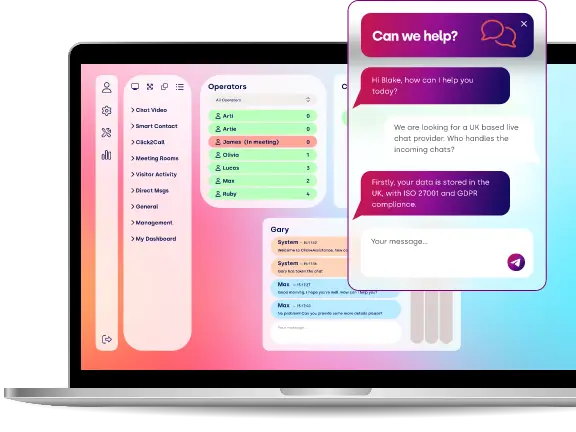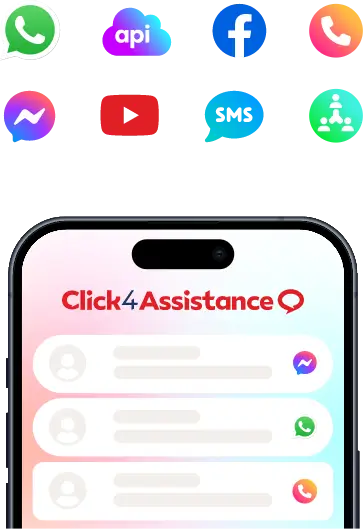The Comprehensive Guide to Generative AI

Explore Generative AI from its inception to its latest advancements, discovering applications, benefits, and ethical implications.
As AI continues to play an increasingly important role in a range of business applications from content generation to web live chat software, entrepreneurs and executives can no longer afford to sleep on this groundbreaking technology. If you’re feeling confused about where to start, you’re in the right place.
In this comprehensive guide to generative AI, we’ll uncover its significance in artificial intelligence by looking at various models, applications, trends and ethical implications. By the end, you should feel more confident in using one of the most important breakthrough technologies of 2024. Here’s all you need to know.

Understanding Generative AI
AI is estimated to be worth US$184.00bn in 2024 and is currently growing at a rate of 28.46%. Generative AI is undoubtedly one of the key driving forces behind this growth, supporting businesses of all sizes across a wide range of industries.
Generative AI, also referred to as GenAI or GAI, is a type of AI capable of producing data in response to a user’s prompt. Different GenAI tools may be used to generate images, video, text, and other data while the results are virtually instantaneous.
The history of GAI can be traced back to the 1960s when chatbots were introduced, but has seen exponential growth since GANs (generative adversarial networks) were developed in 2014. Now, generative artificial intelligence is used by advanced web live chat software and in various other applications.
Using GAI may vary slightly depending on the models and tools in question. However, the fundamental process for content generation is as follows;
- Training data inputs and algorithms will ‘teach’ the AI model so that it can identify patterns and structures through machine learning.
- A user gives a prompt to the GAI tool. For example, they may ask ChatGPT to compose an email.
- The GenAI model generates the data, ensuring that it has similar characteristics to the input data it has learnt.
Generative artificial intelligence has become a frequently used tool by individuals and consumers, but its true potential is seen through the way it can transform a modern business.

Generative AI Models and Tools:
Given that generative artificial intelligence may be used to generate different types of data, companies hoping to tap into the potential of GenAI must first familiarise themselves with the various tools and uses.
More than one-quarter of companies using AI already have GAI on their agendas. Here are some of the most likely tools that they will adopt.
ChatGPT
ChatGPT was arguably the first GenAI system to enter the public consciousness following its initial release in 2022. Developed by OpenAI, the tool can be used for many business purposes to support productivity, efficiency, and scaling.
It can generate ideas, proofread texts, write codes, translate language, and achieve much more. The tool now attracts over 1.6 billion monthly visits and can generate video, audio, and text with instant results.
Gemini
Formerly known as Bard, Gemini is a chatbot devised by Google AI. Its initial release came in 2023 before a stable release in 2024. The chatbot can be used for learning, content creation, planning, and more.
It attracts more than 330 monthly visitors and is available in over 200 countries while the Gemini API can be integrated into businesses. It has three versions;
- Nano - for powering generative A.I. applications on mobile devices.
- Pro - for upscaling deployment.
- Ultra - for when extra computing power is required.
DALL-E
DALL-E is a text-to-image model that works with ChatGPT. Microsoft uses it as a part of its Bing Image Creator. Released in 2021, its stable release came in 2023. As well as DALL-E, there is DALL-E 2 and DALL-E 3.
Additional tools that organisations may use include Anthropic, Baidu, Copilot, LaMDA, Midjourney, Stable Diffusion,
Applications and Use Cases:
The growing popularity of Generative AI can largely be attributed to its widespread applications, as this ultimately allows organisations to transform their operations with wholesale improvements. Some of the most significant are detailed below:

Customer Service
Customer care is essential for maintaining client satisfaction. AI-powered web live chat software is ideal and can be tailored for large organisations and SMEs alike to deliver accurate results based on the information that you feed it. This allows for;
- Instant results to user queries, on a 24/7 basis.
- A chance to remember and recall past interactions.
- Meet high demands with few/no human agents.
- Easy updating of customer care as per company insights.
- Data capturing and analysis to identify trends.
A growing number of consumers now actively prefer chatbots and the self-serve approach to customer care. With AI now capable of integrating with the company’s CRMs, fast and accurate answers are provided time and time again.

Content Creation
Image creation is the most common use for marketers, with 69% using it for this reason. However, it is also used for text generation and audio creation. Content could subsequently be used for a range of purposes, including but not limited to;
- Create engaging blog posts.
- Generate tutorials and other helpful content.
- Compose marketing emails.
- Build social media posts and PPC content.
- Develop internal training content.
Whether addressing clients or employees, GenAI content creation can overcome issues like writer’s block while also accelerating the creation process. It can additionally free up time for other business assignments.

Product Design
Product design is another area where generative AI is increasingly popular. In fact, over 2 million developers are working on Apps developed through OpenAI. Gen AI tools may be used to support businesses in many areas, such as;
- Developing concepts.
- Visualising concepts in early development.
- Developing physical products.
- Analysing the concepts and proposed products.
- Understanding product design relating to the client.
As far as product design is concerned, AI is best used for early-stage developments. Still, it can save time and money, as well as resource utilisation. In turn, this can significantly speed up the design process.

Drug Discovery
AI in drug discovery and development is another common application, utilising machine learning and data-driven decisions to improve product life cycles and manage pharmaceutical products. Some areas of interest include;
- Understanding disease.
- Small molecule design.
- Vaccine design.
- Antibodies design.
- Toxicity and safety.
As well as improving current drug discovery applications, generative AI can identify future challenges and solutions. Its use can extend to clinical trials and drug repurposing endeavours too.
Benefits and Limitations:
An estimated 35% of employees now use generative AI on a weekly basis, with 11% using it daily. To unlock the full capabilities of GenAI while simultaneously avoiding potential pitfalls, understanding both the benefits and limitations is essential.
The Benefits of Generative AI
- Thanks to items like web live chat software, generative AI can reduce the requirements for human resources in areas like customer care and allow you to redistribute employees to other business matters.
- Generative AI can boost productivity, not least in ensuring that content creation endeavours are supported by a steady flow of ideas and generated data. It also means customer care is available to users at all times.
- Productivity increases as GAI can summarise data or complete jobs like translation or take on tasks like coding and solving complex maths problems. In short, the instant nature of the results will save valuable time.
The Limitations of Generative AI
- Generative AI relies on data-driven algorithms and is unable to contextualise new info or data from outside its training parameters. Likewise, it does not have the natural creativity of the human mind. These issues mean it can’t do everything.
- Biases can essentially manipulate generated content or enforce incorrect stereotypes. This has been noted in several cases and is an issue that may impact product design, content, and customer care services alike.
- There are further ethical implications of using generative artificial intelligence, such as plagiarism and an inability to create truly unique ideas as everything links back to training data and inputs.
Technology and Advancements:
Generative AI is still very much in its infancy. As mentioned, GANs only surfaced a decade ago and it wasn’t until 2021 that tools became common knowledge. It is one of the fastest-growing sectors, which is further underlined by the fact that 1,500 companies now operate solely in the AI software space. Unsurprisingly, the major players are rapidly evolving.
In the case of DALL-E, DALL-E 2 was released within 18 months of the original version with the goal of generating more realistic images with more complex capabilities, such as combining concepts. DALL-E 3, the next iteration, is able to produce more nuanced images and highlights the need for developers to keep improving the technology in alignment with growing user expectations.
Gemini replaced Bard, which was initially tested by 10,000 trusted testers, less than one year after the predecessor had been released. Google AI’s decision to do this reflected changes to the landscape, with the newest tool offering far greater capabilities. The three versions (Nano, Pro, and Ultra) further showcase this fact. The tech advancements have had to keep pace with the growing audience.
ChatGPT has also undergone huge tech advancements through the release of various versions up to GPT-4 while GPT-5 is in the making. Like its competitors and sister generative AI tools, mobile apps have been released too. This has presented greater versatility and convenience whether the GAI is intended for web live chat software, content creation, or another purpose.
Further developments, such as investments into preventing jailbreaking and improving factuality, show that the technology’s evolution will not stop anytime soon.

Concerns and Ethical Implications:
Generative artificial intelligence is an extremely powerful technology that opens the door to many possibilities, but it also creates several potential problems. Companies looking to integrate GenAI into their operations via web live chat software, content creation, or other channels must be aware of the following challenges:
Misinformation
The threat of inaccurate information has been prominent throughout the digital age as anybody can upload data to the internet. However, GenAI has catapulted the problem into a whole new dimension.
One report stated that the tech had been used in at least 16 countries to influence public debate by swaying opinions. Meanwhile, when GenAI learns inaccurate data, this can naturally lead to misinformation when generating new data sets itself.
Plagiarism
In addition to generating inaccurate data, GAI may be guilty of plagiarism as it creates its output based on the input data. It introduces several concerns regarding integrity in both academic and business circles.
As well as plagiaristic outputs relating to generated text, there are many examples of generated images that essentially breach copyrighted intellectual properties. Apart from the obvious issues, plagiarism detectors may see businesses punished in SEO rankings.
Job Displacement
Research suggests that automation and AI will replace almost 5% of all US jobs by 2030 while the UK is set to experience a similar rate. This covers jobs across content creation, product design, customer service, data entry, and more.
Given the cost of living crisis and existing unemployment rate, as well as population growth, it is a potential worry that must be addressed. Of course, AI can lead to job creation too.
Ethical Implications
The line between authenticity and artificiality can be blurred by generative AI, causing content creation issues relating to bias as mentioned above. Possible ethical implications extend to healthcare via patient privacy issues.
Autonomous vehicles are another environment where ethical issues are raised as they have to make instant decisions and prioritise outcomes in potentially dangerous situations. It can create a legal and ethical minefield.

Security
Finally, cybersecurity issues sounding generative artificial intelligence may pose problems for all, including businesses not using the technology. Up to 85% of cybersecurity leaders say recent attacks have come from AI.
There are additional issues relating to AI model safety, enterprise data usage, and prompt safety. While regulations do change to reflect the evolving landscape, companies must stay proactive in their approach to this issue.

Key Figures and Organisations:
As generative AI continues to evolve, any entrepreneur or executive looking to tap into its capabilities must be willing to educate themselves further with continued reading on the latest developments. After all, it is a rapidly evolving environment and staying one step ahead is the only way to thrive.
Key figures and organisations to follow include, but are not limited to;
Joseph Weizenbaum
Although he died in 2008, Joseph Weizenbaum remains a key figure in the world of AI. The German American warned about potential problems with generative AI, even back in its infancy, and his words have repeatedly resurfaced in recent times. His work into what makes humans different to computers ultimately surmised that we must never confuse computers with humans. As organisations look to continue developments without entering ethical problems, Weizenbaum’s articles from the 20th century are still very relevant.
Ian Goodfellow
American computer scientist Ian Goodfellow invented GANs, making him one of the most important names in the field of GAIs. He contributed a chapter to ‘Artificial Intelligence: A Modern Approach’, which is one of the most important books for students and businesses looking to learn Gen AI’s true capabilities. Known as the GANfather, he has played a central role in enabling computers to learn datasets and subsequently generate images, texts, and other media. Any news involving him will be of huge relevance.
OpenAI
Founded in 2015, OpenAI is the creator of ChatGPT and DALL-E, including all of their various iterations. With Microsoft now holding a board seat, their systems are set to remain at the heart of generative artificial intelligence for the foreseeable future. Keeping abreast of the latest developments, including the release of GPT-5, should enable businesses to understand the growing possibilities of Gen AI. it will enable them to generate more meaningful content and embrace new applications.
Google DeepMind
Google is behind Gemini, one of the most important AI chatbots and language models. Meanwhile, Google DeepMind is the subsidiary that powers the organisation’s artificial intelligence endeavours. Google remains the most visited website and will be eager to stay at the top table of generative AI, not least as it integrates seamlessly into other Google products. Any business looking to improve its output on Google Workspaces must follow the latest developments and take advantage of any training models.

Future Trends and Developments:
Gen AI has already seen rapid growth and the most obvious anticipated trend is that its adoption rates will soar over the coming months. Research shows that 72% of CEOs cite generative AI as a top investment priority, which will only further fuel the need for new developments and further integrations.
While the majority of organisations will dip their toes into the water with web live chat software, they can also use it for inventory management and maintenance. They could soon utilise it for a wide range of new applications too, such as;
- Continued implementation within existing mainstream applications.
- Creative industry developments, especially for cookie-cutter productions.
- Generative AI to support blockchain technologies.
It should also be noted that governance will change. The AI Act has already passed into law while further regulations are set to enter the environment as a way to overcome potential risks and hurdles.
Further developments include the continued shift towards cloud-native ecosystems and the use of programs designed to complete specific objectives. This could open the door to new capabilities for the technology while also changing the face of the industry, particularly in the demand for employees who know how to integrate AI tools and/or use prompts to make the most of generative AI systems.
One thing is for certain; generative AI is here to stay. If your business has thought about embracing the advanced technologies, now is the time to act.
Ready to explore the limitless possibilities of Generative AI for your business? Join our vibrant LinkedIn community to stay updated on the latest trends, discussions, and developments in the world of Generative AI.

























